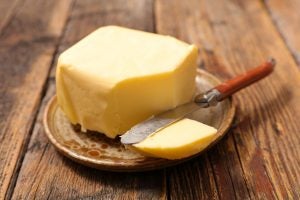The long-term demand trends for dairy products indicate butter, cheese, and other full-fat dairy foods will continue to grow in sales and volume for the foreseeable future. U.S. consumers have shifted away from margarine and reduced-fat dairy foods over the last decade as nutritional science surrounding saturated fats has evolved. As a result, butterfat levels in the national milk supply have risen sharply in response to changing demand patterns and dairy market dynamics.
According to a new report from CoBank’s Knowledge Exchange, the butterfat boom will continue as the entire dairy supply chain is capturing additional value from milk with higher fat and protein levels. The economic incentives for a supermajority of the nation’s dairy farmers are firmly in place to produce milk with more butterfat.
“Despite the significant growth in domestic butterfat production over the last decade, there is still tremendous upside potential, largely because the U.S. remains a milk fat-deficit nation,” said Corey Geiger, lead dairy economist with CoBank. “Butter imports into the U.S. have skyrocketed over the last decade to meet the surging domestic demand for full-fat dairy products. Also, due to strong domestic demand, the U.S. barely exports any of its butterfat. As a result, low-fat, skim-solids product exports far outpace full-butterfat products.”
Full-fat dairy and other animal products fell out of favor beginning in the 1970s over reported health concerns. However, nutrition research in the past 15 years suggests full-fat dairy has a much more nuanced role–and potentially protective effect–on health. Consumers responded to the evolving science quickly, triggering what has proven to be a long-term shift to previously tabooed dairy foods like butter.

There was a time when U.S. milk and butterfat production were synonymous. When measured by pounds, milk, and butterfat production mirrored one another from 1995-2010, each growing a collective 24 percent. But milk and butterfat production have since decoupled. From 2011-2022, milk pounds shipped from U.S. farms grew 15 percent. However, butterfat pounds shipped from those same farms grew 27 percent.
Dairy producers have steadily increased butterfat content levels in milk through innovations in feeding programs and the use of genomic testing programs. Genomic tests can reveal 70 percent of the genetic ability of a young calf years before it becomes a milk cow. The science has expedited genetic gains in the U.S. dairy cow herd and dramatically shifted butterfat composition in recent years.
Geiger said the overall market picture for butterfat is quite straightforward, with tremendous growth potential domestically and ultimately via the export market.
“The reality is that consumers are eating rather than drinking their dairy these days,” said Geiger. “And they are increasingly favoring full-fat dairy foods over reduced-fat options. That means continued innovation in things like premium butter, butter spreads, and further development in the butter board phenomenon will bring value to producers, processors, and consumers alike.”
»Related: Outrage churns over Ill. butter cow: Fans can’t believe it’s not ALL butter


